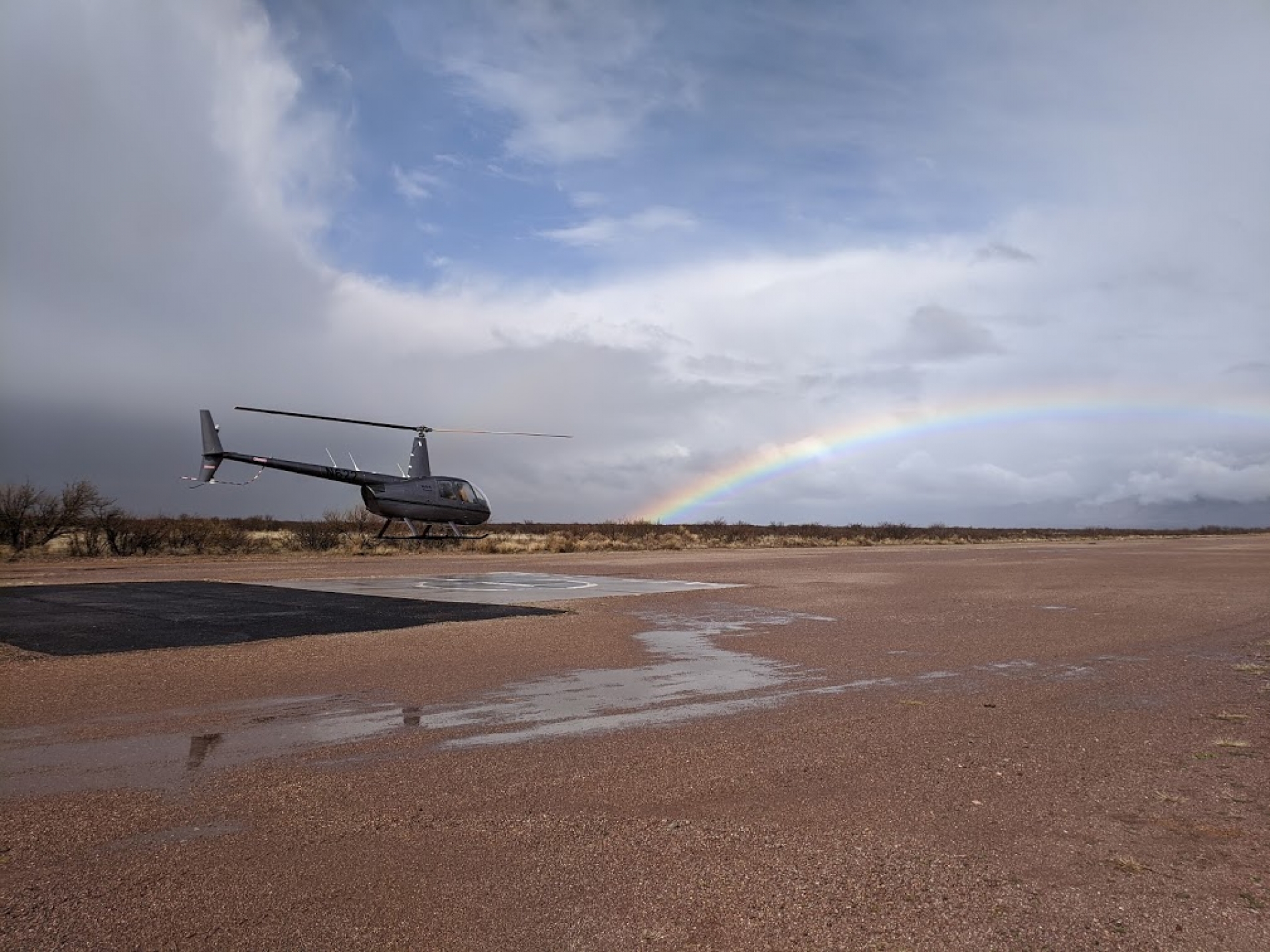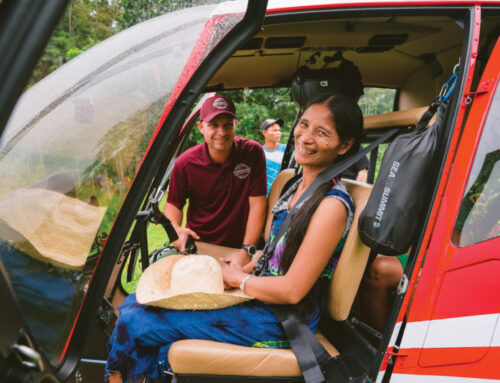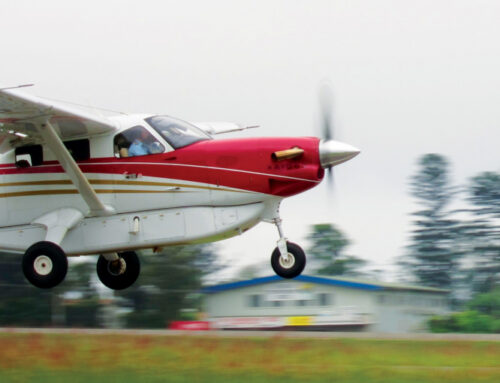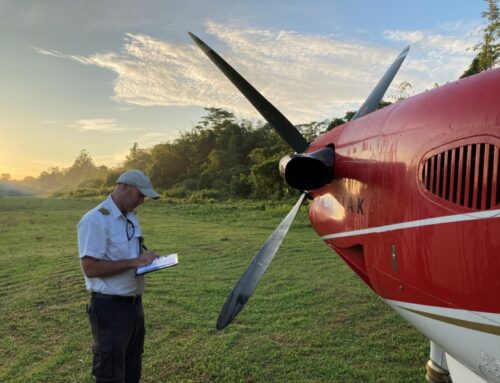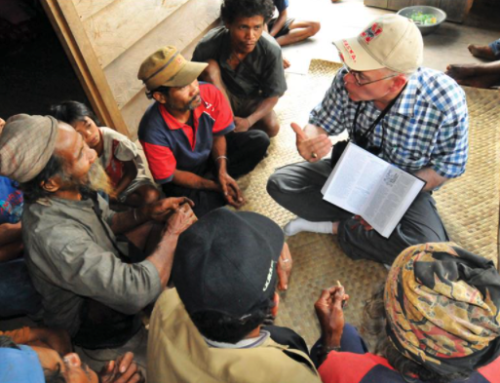by Beka Burns, pilot/mechanic’s wife
God is such a provider! The Ethnos360 Aviation fleet now has more helicopters than airplanes!
In many of the remote locations we serve, transitioning from airplane to helicopter allows us to make the switch from long airstrips to small landing zones. Helicopters can land almost anywhere, and that makes them an awesome tool for the job God has given us.
Here’s the problem: Most of our missionary aircraft mechanics spent their training focusing on airplanes, so they come to us with no experience working on a helicopter.

Cody Burns getting the R44 down to the bare hull
Cody Burns, a new pilot/mechanic on his way to serve with Ethnos360 in Papua New Guinea, explained: “Prior to my training here, I worked for about two years as an aircraft mechanic. In that time, I never once touched a helicopter.”
So what is the best way to prepare our trainees for the work they will do overseas? A good start would be to completely disassemble the type of aircraft they’ll be working on and rebuild it from scratch!
But does it make sense to tear apart a perfectly good helicopter? Well, sometimes, that’s just what a helicopter needs.
JAARS, another aviation mission that serves Bible translators, just ran into this scenario when one of their R44 helicopters “timed out.” For it to continue flying legally, it had to be torn apart, inspected, and rebuilt — an extremely time-consuming process.
Here’s where we really see God’s hand at work: Right about this time, JAARS was also searching the world over for a low-hour Cessna to serve their Bible translators in Cameroon. Ethnos360 Aviation offered to sell them one of the training airplanes we no longer use; we bought their timed-out R44; and now both aircraft continue serving the work of getting the incredible message of Jesus Christ to unreached people groups. Everybody wins!
Until we implemented the stay-at-home order at Ethnos360 Aviation’s main hangar in McNeal, AZ, the class of new aviators spent a good part of each day working on that helicopter.
“Being able to overhaul the R44 has been a huge help as we have stepped into the world of helicopter maintenance,” said Jeremy Dunn, a maintenance specialist who is also planning to serve on the field of Papua New Guinea. “We have grown and learned so much through this immense and awesome project. Each of the mechanics involved has been stretched to accommodate new skills and knowledge that will be invaluable on the field.”

Trainees Brad Richert (l.) and Cody Burns reassembling the R44
Ryan DeRoos, a Canadian pilot heading to the Philippines adds, “Being able to rebuild this helicopter from basically nothing really gives us so much knowledge on how things work and go together.”
From the skids to the rotors, from wiring to interior, from shaping sheet metal to putting the final touches on the new paint job, our trainees have gotten hands-on experience with every inch of this aircraft. Several of us were holding our breath the other day as the rotors slowly started turning, picked up speed and finally pushed the helicopter upward on its first test flight since the overhaul.
“To see the helicopter fly when just months before it was a set of parts scattered all over the hangar — it’s a whole new level of excitement!” Cody grinned.
This project has been an incredible way to gain experience and instill confidence so that our trainees can step forward into all the changes ahead and excel in the work God has called them to. What a creative God we serve! We continue to stand in awe of what He has made possible!
You can ensure that the training of these excellent pilots and mechanics accomplishes its purpose. While they maintain and fly the aircraft, your partnership with our Missionary Flight Sponsorship Program helps keep flights affordable for all our church planters — western, national, and indigenous. Thank you!

